“Yeah, but a new one will look fresher and nicer,” said a friend of mine.
That was the moment I realized that “new things are better than old” has permeated our lives so profoundly that it is hard for us to rethink otherwise. The modern thought pattern might be distracting us from noticing the benefits that “old” things can bring to our future. As I introduce two ways for you to express who you are authentically and naturally with old things and heritage crafts items, I will suggest how heritage craftsmanship can benefit our future.
Index
- Introduction
- An Unbreakable Wristwatch Changed My Perspective
- The Excitement of Finding Someone in My Family in The Past Had the Same Taste as Me!
- Let’s Find Emotionally Intimate Items that Add Sparks to Who You Are in two ways
- Heritage Craftsmanship Can Bring Hints to a Sustainable Future
- Now, is something being Old that Bad?
- And now what?
Before diving into the topic, allow me to introduce myself. I’m Satoko, the founder of “KoLe SHIKOKU, Japan,” from and live in Kagawa, Shikoku, Japan. I curate and retail items that blend the modern lifestyle and heritage craftsmanship of Shikoku for international use. In collaboration with independent local artisans, craftspeople, and artists who produce our curated items, KoLe not only offers curated items but also encourages the customization and creation of original pieces from scratch. I do what I do for one mission and a dream.
-mission: Redefining Luxury to Preserve Heritage Craftsmanship for Hints to a Sustainable Future
-dream: Witnessing the Filament Lamp Effect occurred from the ecosystem of my local heritage craft.
*more info> our mission | the Filament Lamp Effect | founder’s story |
An Unbreakable Wristwatch Changed My Perspective
Look around your desk. How many things do you actually use that are used by over a generation? How many things can be passed on to the next generation? Since I asked these questions, you might think I must have many of these items. But the reality is just one item: my father’s wristwatch. Among many plastic-made, disposable, and unfixable tools and gadgets, my father’s wristwatch has the aura of authority.
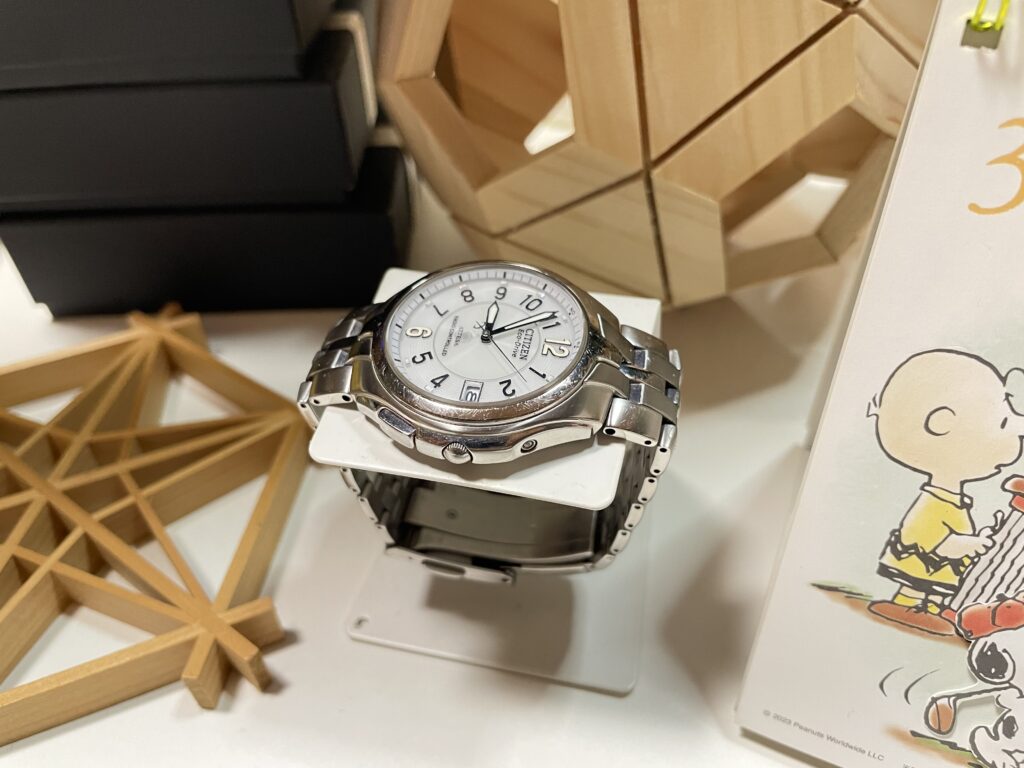
I inherited the watch when my father passed away. This model isn’t worth any money and is obviously a male model. Still, I wear it even when I wear a kimono, the traditional clothing of Japan. I have received a few critical comments, but “This is my deceased father’s” explains everything and even becomes a conversation opener. When I inherited it, I promised myself I wouldn’t buy a new one until this one became unrepairable. Once, I wanted a new one and wished for it to break for good. But it hasn’t happened yet. Now, it has my father’s scratch marks and mine. This model is well-sold, but the watch with the same scratches is mine only in the universe. The ordinarily inexpensive model of the watch is filled with father and daughter history and after. “I cannot buy that from a shop, can I?” That was a perspective-changing moment. And it was before I started “KoLe, SHIKOKU, Japan.”
The Excitement of Finding Someone in My Family in The Past Had the Same Taste as Me!
Many people know that well-crafted watches are repairable and have a long product life. What about wooden tableware? After discovering and experiencing new values in the old watch, I wondered if there was another item that I could use to add my roots to everyday life—something that has been there, is reparable, and is realistically usable, preferably a local heritage craft item. I found it this year! While I was staying at my century-old family house for the New Year, I decided to excavate some items from the piles of things that past generations had left. I found this Shikki tray.
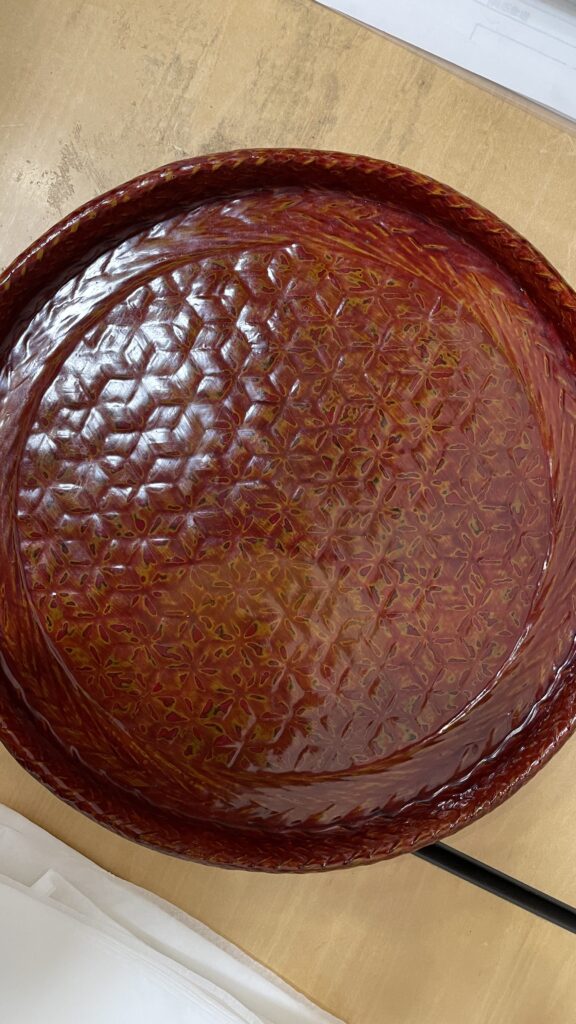
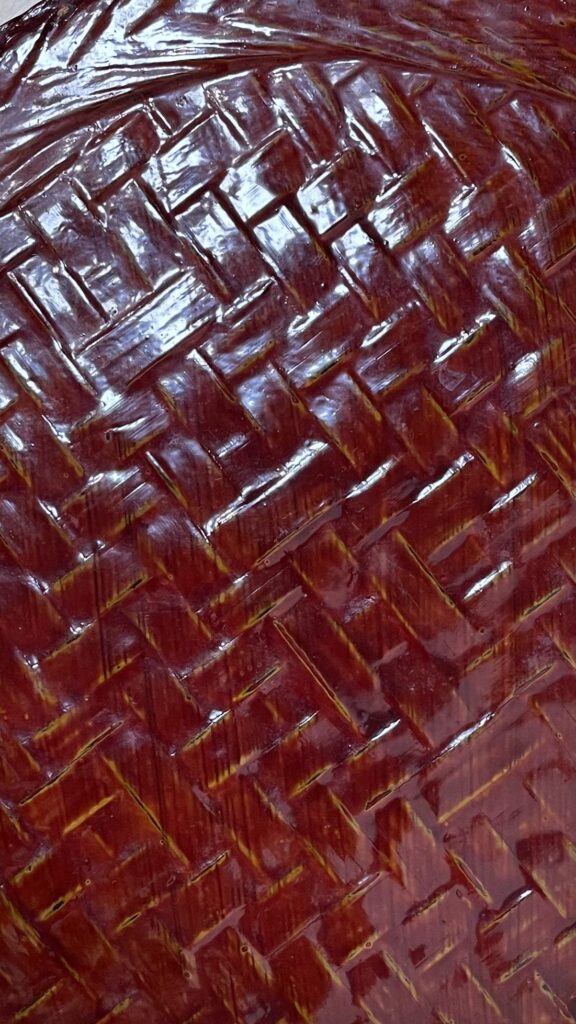
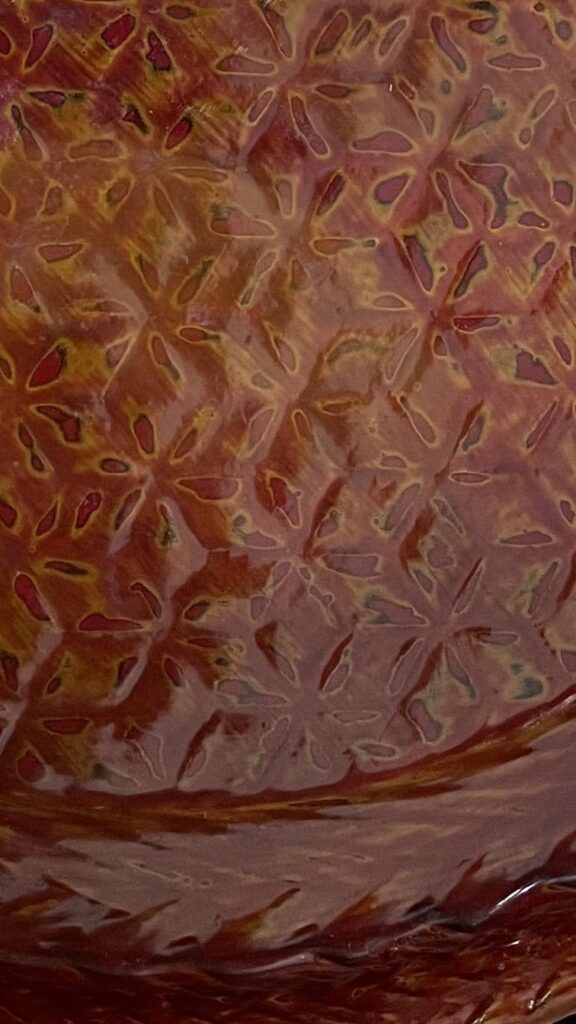
Shikki is a generic term for the products painted by Urushi, a Japanese lacquer. Kagawa is one of Shikki’s production areas. The tray I found is an Ajiro—a thin piece of cypress or bamboo woven diagonally, vertically, or horizontally—base, coated with layers of different colors of Urushi and then polished evenly until the colors of the lower layers appear to create patterns. As a result, along with Ajiro’s woven pattern, tiny flower-like patterns are shown on the surface.
I don’t recall anyone using it, but my family members from before my time must have used it. Not being used for decades caused cracks on the surface of Urushi. At some point, an accidentally placed too-hot object discolored it. Although I found unused Shikki trays at the house, I picked this cracked, discolored tray. From the damage, I could see someone in a past generation favorited this tray. What excited me the most was the design. Someone in the past who I don’t know had the same taste as me!

I asked the owner of KoLe’s collaborating Shikki studio to repaint the tray. Because of the cracks, I should not use it as it is. It would damage the base and become unrepairable. Shikki can be used for centuries if you take good care of it—use it properly and repaint it when needed. Since the old Urushi has to be removed, I decided to paint it with new colors, navy and gray!
I am looking forward to it being back.
Many heritage crafts products are designed to be repairable, partially replaceable, or durable. It is probably because that was consumers’ preferences and demands a long time ago.
Let’s Find Emotionally Intimate Items that Add Sparks to Who You Are in two ways
- Be empowered by ancestors: Find something from your home
- Be the one who starts a legacy: having bespoke items made
1: Be empowered by ancestors: Find something from your home
You might find something like my wristwatch and Shikki tray at home or your parents’ or grandparents’. Try to find something realistically usable and use it often in your modern-day lifestyle. Look for something that makes you feel connected with your past generations and makes your heart smile. Once you find it, consider using it for years or even centuries. Start by researching what kind of craft it is. Knowing the craft helps you treat it correctly and find artisans who can repair it. If what you find seems to be in need of repair or TLC, look for the artisans. They can tell you more about the craft.
2: Be the one who starts a legacy: having bespoke items made
If you have no chance of digging through old stuff related to your family for many reasons, how about having something made for you by heritage craftspeople? Something that you know you will use for decades, and you want to pass on to the next generation with the stories of yourself and the artisan who made it. Start looking for many different kinds of heritage crafts and learn about them—what the crafts are for, materials, methods, how to maintain them, history, and so on. You might find some crafts or artisans that resonate with who you are.
The beauty of old/heritage crafts is more than the art of craftsmanship or the appearance of the products. Here are some examples:
- Bespoke Items: Many heritage craft items are made-to-order. Receiving orders to create something new from scratch is regular work for many artisans.
- Natural Materials: Many heritage crafts had been around long before plastics were developed. Materials used for heritage crafts often have a low impact on our planet.
I must warn you. If you find something from what your past generations left, you might encounter one problem—the crafts industry no longer exists. This leads to my mission.
Heritage Craftsmanship Can Bring Hints to a Sustainable Future
During the COVID-19 pandemic, I heard one heritage textile craft ended as an industry in Shikoku. “A heritage craft disappears” as an industry means there are no artisans left, or the remaining artisans don’t make a living from the craft. Once one heritage craft disappears, everything associated with it—knowledge, skills, materials, tools, and so on—disappears for good. Many heritage crafts have disappeared all over the world.
It might sound okay in our contemporary lives, but it is not for our future. Losing living knowledge, skills, and materials from before the Industrial Revolution could impact today’s efforts to create a foundation for a sustainable society.
The combination of modern technology, science, and traditional wisdom could find new solutions. It is too late to reglet when someone smart realizes that one tool, material, or method of a lost heritage craft could solve the problem. Is recreating lost artisanship easy? Let me ask you this: “Can we, modern people, build Machu Picchu using the same method as when it was built?”
While many people worldwide are tackling our environmental issues proactively and directly, I want to preserve their options and elements by keeping as many heritage craft industries as possible for future solutions.
Now, is something being Old that Bad?
“Yeah, but a new one will look fresher and nicer.” This was part of my conversation with my friend when I genuinely complimented him on a cast iron tape cutter he has in his office. It’s presumably at least 50 years old. It has been there since his father was the CEO of the company my friend runs now. The initial green color of the cast iron part faded with a bit of rust. The rust shows the time and history the tape cutter shares and grew old with the company. I felt it was like Morgan Freeman of the stationery world—aged well, cool, and dignified. But what my friend sees it is “dingy and out of style.” Would he get a new plastic-made and stylish tape cutter? If so, it won’t be like Morgan Freeman of the office supplies. It will just be “dingy and old.” I did not argue further. It is just perspective differences, and his opinion is not wrong either. I just hope that he will pick non-plastic material for a new one.
Although I run “KoLe SHIKOKU, Japan,” with the mission and values I expressed in this article, I do not think every person on the planet should think like me. After all, great inventions to save the world need diverse perspectives from different fields. I hope I can connect with like-minded people to work together, or what I post will present a slightly different perspective to enrich your life.
Whether you are an environmental enthusiast or not, I would really like you to try the two ways I introduced here—adding something to your life from your past generation or having something special made by a heritage craft artisan. They amplify your life’s fulfillment, and your actions automatically contribute to the future regardless of your intention.
Let us hear about your journey of finding “Emotionally Intimate Items that Add Sparks to Who You Are.”
Share your story on your social media and tag us so that we can see your post:
#KoLeIntimateItems
Instagram
@kole_shikoku_japan
Facebook
@koleshikoku
If you would like to consider having our collaborating artisans make your special something:
Let us know!
Tap/click here
Did you like the topic, article, or what we do?
Let’s connect!
Be our MiseNoMa members:
You will be invited to members’ exclusive one-on-one online events and receive once/twice updates.
Your support is much appreciated!
Any topic suggestions?
Your insight is valuable, so do not hesitate to tell us what you would like to know about.
Do you know anyone who’d be interested in this article?
Please let the person/people know.
Thank you for your time.



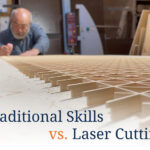

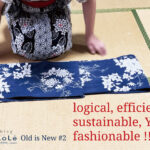
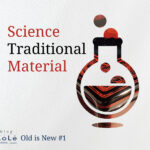
Comments by satoko